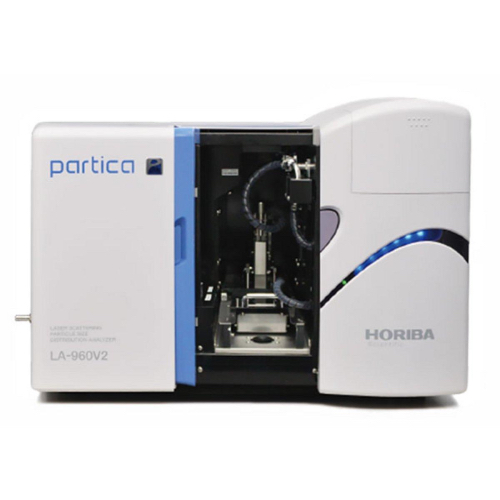As society seeks to advance electrification in pursuit of global sustainability goals, demand for ever-better performance from devices such as lithium-ion batteries is growing steadily. To meet this demand, lithium-ion battery researchers are seeking to gain more control of the materials used and their physical properties. Particle characterization plays a crucial role in realizing this. This article outlines the fundamentals of particle characterization as it pertains to lithium-ion battery R&D and highlights instruments used to conduct this technique.
What is particle characterization?
Particle characterization is the process of analyzing and describing the physical and chemical properties of particles. Particles can vary significantly in size, shape, composition, and other attributes, and understanding these characteristics is essential in lithium-ion battery R&D to improve their efficiency, lifespan, and safety.
Check out the applications note on particle analysis of lithium-ion batteries:
How is particle characterization used in lithium-ion battery R&D?
The performance of lithium-ion batteries directly correlates to the properties of the materials of which they are made. Below are several ways in which particle characterization is used in lithium-ion battery R&D.
Cathode and anode materials
Anode and cathode materials are key components of lithium-ion batteries. A partial list of cathode and anode materials includes:
|
Cathode materials:
|
Anode materials:
|
Understanding the particle size and size distribution of cathode and anode materials provides insights into electrode performance, the metrics of which include:
- Capacity: The amount of electric charge that an electrode can store.
- Charge/discharge rates: How quickly or slowly an electrode can accept or deliver an electrical charge.
- Cycle life: The number of charge and discharge cycles a battery or electrochemical device can undergo before its capacity significantly degrades or it becomes less effective. It is a critical factor in determining the lifespan and durability of a battery.
The shape of particles of cathode and anode materials can affect:
- Packing density: This refers to how closely the particles are packed together. The shape of the particles can influence how efficiently they fit together, affecting the overall density of the material. Higher packing density generally means more lithium ions can be stored in a given volume.
- Porosity: Porosity is a measure of the empty spaces or pores within a material. The shape of the particles can influence the porosity of the cathode and anode materials. Porosity is important because it affects the accessibility of lithium ions to the interior of the material, impacting the efficiency of ion movement within the electrode.
Diffusion of lithium ions: The shape of the particles affects how easily lithium ions can move within the material. Different shapes may generate pathways that promote or impede the movement of ions. Efficient ion diffusion is crucial for the performance of a lithium-ion battery because it affects how quickly ions can move between the cathode and anode during charging and discharging.
Electrolyte and separator materials
As with electrode materials, knowing the particle size and distribution of components in the electrolyte (including salts and solvents) and separator materials helps optimize electrolyte conductivity and separator properties.
Binder and conductive additives
Binder and conductive additives impact electrode integrity and electrical conductivity. Characterizing their particle size and distribution helps optimize electrode structure and improve electron and ion transport.
Degradation analysis
As lithium-ion batteries go through charge and discharge cycles, the properties of the electrode materials can change. Monitoring changes in particle size, shape, and surface area over time helps researchers understand degradation mechanisms and improve battery lifespan.
Safety considerations
Particle characterization techniques can be used to study the thermal properties of battery components. Understanding how materials respond to changes in temperature is crucial for assessing and improving the safety of lithium-ion batteries.
Characterization of Solid Electrolyte Interphase (SEI):
The SEI layer forms on the surface of the electrodes during the initial cycles and significantly impacts battery performance. Characterizing the composition, thickness, and properties of the SEI layer is critical for understanding and optimizing battery behaviour.
Horiba Scientific instruments for particle characterization
 HORIBA Scientific has 200 years of experience in developing high-performance scientific instruments and analytical solutions. It offers an impressive range of instruments for particle characterization, including the Horiba LA-960V2 laser scattering particle size analyzer depicted below.
HORIBA Scientific has 200 years of experience in developing high-performance scientific instruments and analytical solutions. It offers an impressive range of instruments for particle characterization, including the Horiba LA-960V2 laser scattering particle size analyzer depicted below.
This latest evolution in the LA series continues a long-standing tradition of leading the industry with innovative hardware and software design. The new optical design allows the user to visualize particle dispersion in real-time.
Contact:

SRC continues to offer our customers a range of innovative, high-quality scientific products and laboratory services throughout Canada for industrial and scientific markets. For more information about Horiba Scientific instruments for particle characterization for lithium-ion batteries and other applications, please contact a member of our staff.



